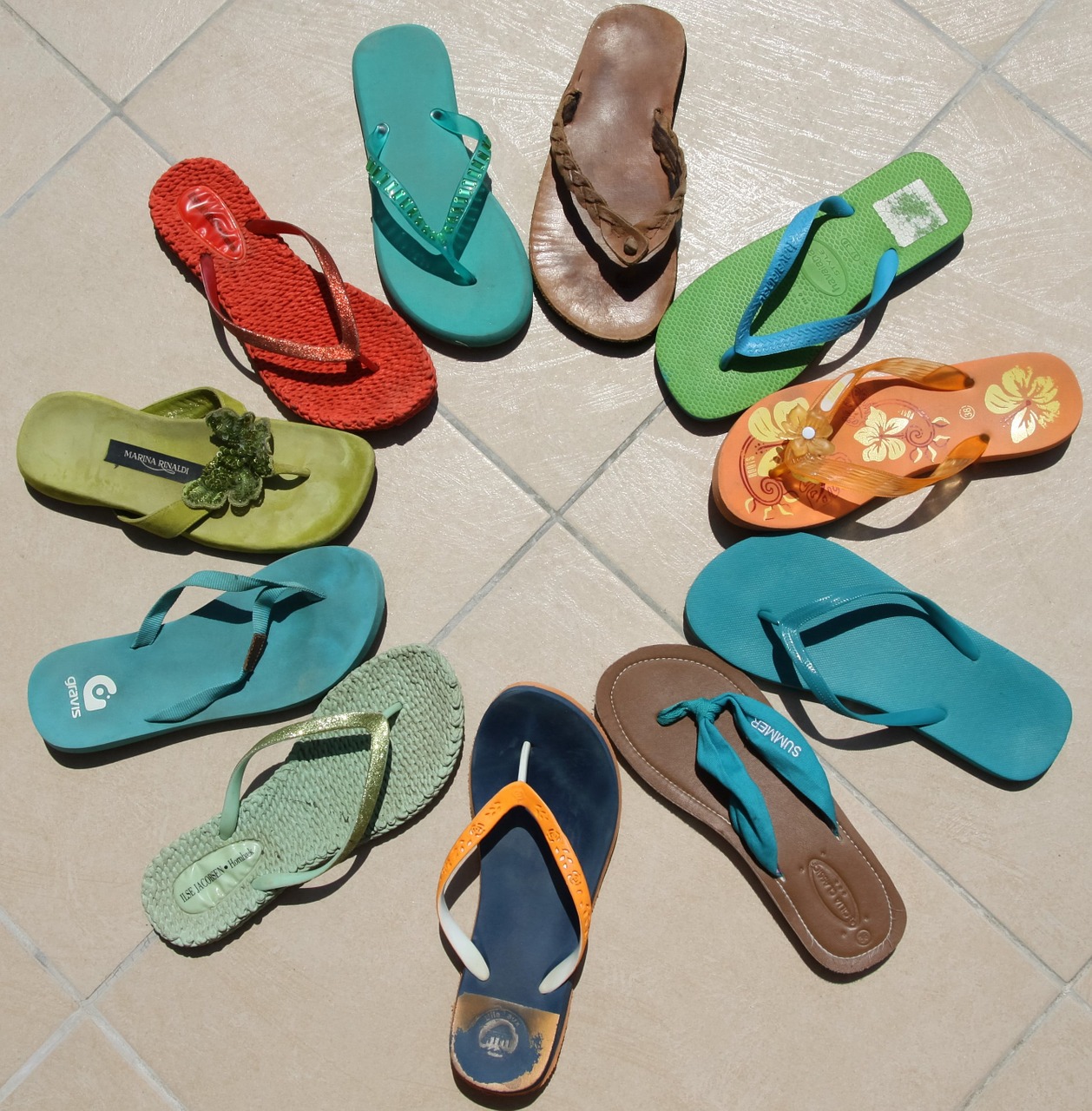Flip Flops: are they good for our feet?

Quick and easy to wear, flip flops have become the footwear of choice for many of us during the summer season, but how do they affect our feet? And what can we do about it?
An essential accessory of summer, flip flops used to be a cheap and easy to pack shoe for the beach or pool side on our holidays; more recently though, people have started to favour them as their number one shoe choice in warm weather, wearing them on a regular basis.
They surely keep our feet cool and free to breathe in the heat, and they offer some protection against fungal infections and athlete’s foot when walking around warm and damp public places, such as pools or showers at the gym.
But flip flops were never meant to be our main pair of shoes, and wearing them for long hours can cause more harm than good
In my practice, I see many injuries and chronic foot problems that are triggered by the long-term wearing of flip flops.
Let’s have a look at how they can affect our feet
Hammer toes
Our toes have always to grip the flip flops to keep them on while walking, and this constant clenching can lead over time to shortened toe muscles (hammer toes).
This extra work will not only strain our toes and cause fatigue in our feet and calves, but it can also cause inflammation in the soft tissue, ligaments and calves muscles, bringing cramps and tendinitis, affecting our balance, posture and the way we walk, possibly leading to further problems in knees, hips and lower back.
Flat feet
Flip flops provide no arch support and offer little shock absorption, putting pressure and stress on the heels which are continuously pounding the ground as we walk. This can trigger heel and foot pain and can lead to plantar fasciitis, tendinitis and stress micro fractures, all of which can take a long time to heal.
Injuries
Since flip flops don’t provide any ankle support to help hold the feet in place, there is an increased risk of tripping and injuries like ankle sprains and bones fractures.
Stubbed and stepped on toes and cuts are also quite common, since our feet are completely exposed.
Moreover, the constant friction between the thong of the flip flop and the skin between the toes can cause painful blisters and open sores, which can become easily infected.
This is why flip flops are not meant for a lot of walking and not really meant for the city!
But we still love them… so here are few suggestions on how to get the best out of them
- Limit wearing time!
- Invest in a good quality pair that has some amount of arch support and cushion
- Check the ones you have: no shoe should bend entirely in half, and that is true for flip flops too. Also, wear and tear means their light support has deteriorated, so they are of no use for your feet.
- After a flip flops day, soak your feet in warm water and Epsom salts for 15-20 minutes to relax muscles and ligaments. Add some drops of eucalyptus essential oil for a refreshing experience.
- Stretch!
And here are some good stretches…
Stretch your toes
Sitting cross-legged. gently twist and turn sideways each toe for a minute or two, making sure to work along all its length, from the base to the very top.
Then, interlace the fingers of your left hand with the toes of your right foot.and gently spread them out and away from each other for one minute. Repeat with the other hand and foot.
You can also use pedicure spacers to improve your toes range of movement while watching TV.
Remember to wiggle your toes regularly!
Stretch the top of your foot
Stand up straight and place your left leg back behind you, tucking the toes under and placing them on the floor. Try to hold this stretch for a minute or so; if you feel too uncomfortable, stop, rest and start again; you can also try this stretch while sitting, if easier.
Stretch your calves
Stand near a wall with one leg forward and the front knee slightly bent. Keep your back leg straight, heel on the ground, and lean toward the wall. Feel the nice stretch along the calf of your back leg.The further apart your feet are, the deeper the stretch will be. Hold this stretch for 20 seconds, switch leg and repeat.
Stand on a step and place the ball of your feet on the edge of it, with your heels off the step; if easier, hold on something, like a wall or the handrail of your stairs. Slowly drop your heels down until you feel that beautiful stretch along the back of your legs, hold for 20 seconds, release, and repeat 3 times.
Downward Dog. I love this yoga pose for many reasons, it should really be part of our daily exercise routine. It brings blood flow to our brains, it tones our core muscles, it stretches and strengthens our arms and shoulders, our spine and whole back, and our hamstrings and calves. Starting on all fours, tuck your toes under and lift your hips toward the ceiling, straightening your knees so your body is in an inverted V shape. Press your heels towards the ground, the closer they get to the floor, the deeper the calf stretch will be. Bend slightly your knees while still pressing your heels towards the ground to stretch the lower part of your calves. Lower your knees to the floor to come out of this pose.
